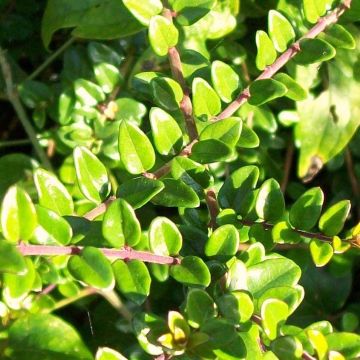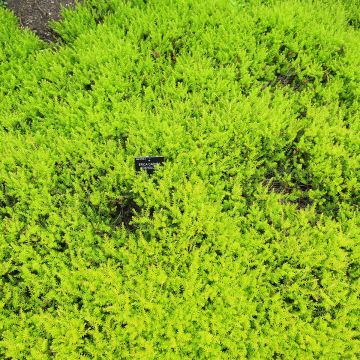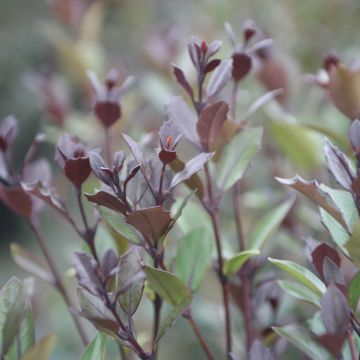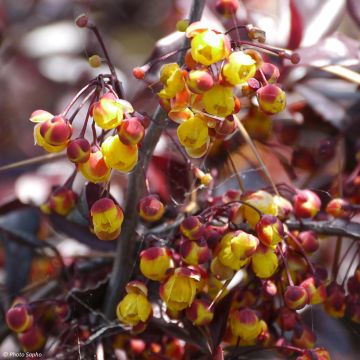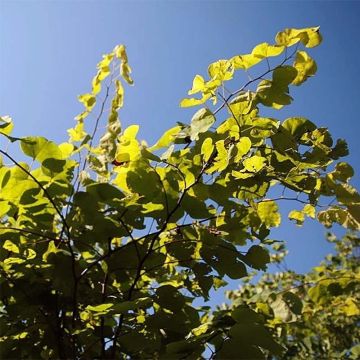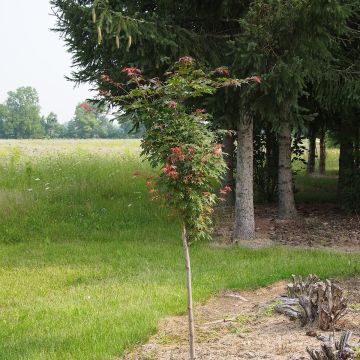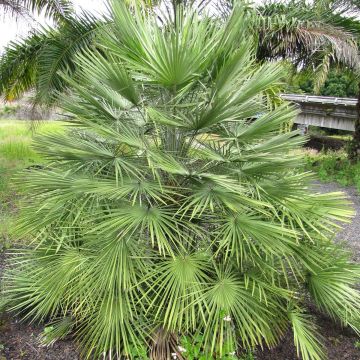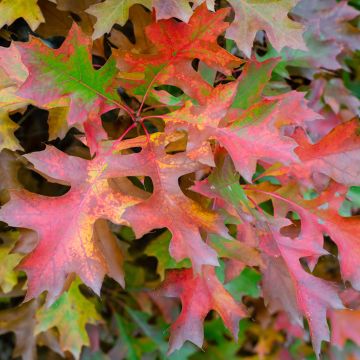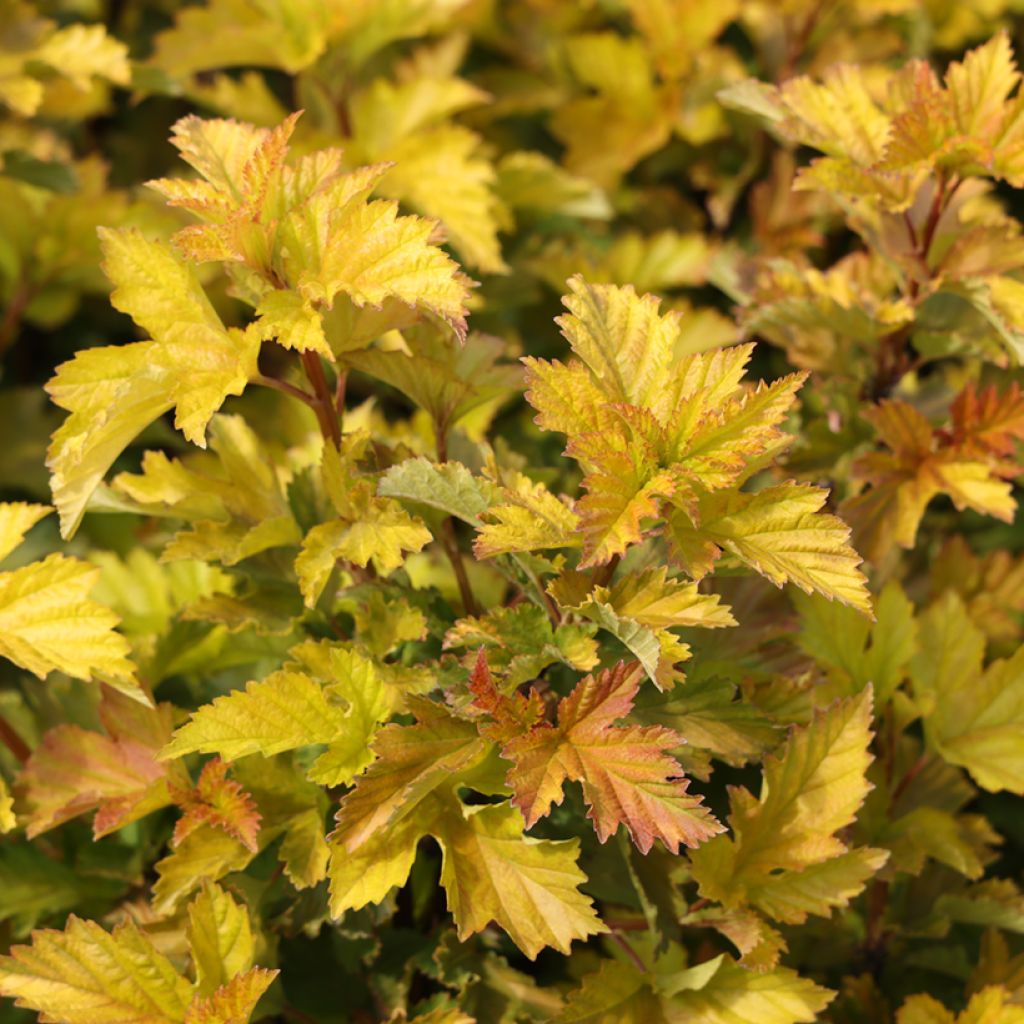

Physocarpus opulifolius 'LP2' LITTLE LEENA - Ninebark
Physocarpus opulifolius 'LP2' LITTLE LEENA - Ninebark
Physocarpus opulifolius 'LP2' LITTLE LEENA
Ninebark, Eastern ninebark
Special offer!
Receive a €20 voucher for any order over €90 (excluding delivery costs, credit notes, and plastic-free options)!
1- Add your favorite plants to your cart.
2- Once you have reached €90, confirm your order (you can even choose the delivery date!).
3- As soon as your order is shipped, you will receive an email containing your voucher code, valid for 3 months (90 days).
Your voucher is unique and can only be used once, for any order with a minimum value of €20, excluding delivery costs.
Can be combined with other current offers, non-divisible and non-refundable.
Home or relay delivery (depending on size and destination)
Schedule delivery date,
and select date in basket
This plant carries a 24 months recovery warranty
More information
We guarantee the quality of our plants for a full growing cycle, and will replace at our expense any plant that fails to recover under normal climatic and planting conditions.
Would this plant suit my garden?
Set up your Plantfit profile →
Description
The Physocarpus opulifolius 'Little Leena' is a variety of Physocarpus with a compact habit, and its foliage takes on changing and attractive shades throughout the growing season. These transformations allow for constantly changing scenes when combined with other plants with decorative foliage. It is also ornamental with its pretty pinkish-white corymbs in spring. Easy to grow in ordinary, preferably moist soil, it thrives in the sun and is very resistant to frost. A true gem for small urban gardens, or even terraces, as its compactness allows for container cultivation.
The Physocarpus is a member of the large Rosaceae family, rich in many wild, fruit-bearing (apple trees, apricot trees...) and ornamental species, trees, shrubs, and even the smallest perennials, such as Acaena, a very aesthetic ground cover. The wild species, the Ninebark with Obier leaves, is a deciduous shrub native to the eastern United States, from Quebec to Virginia, with an arching habit, measuring from 1.50 m to 3 m in height. It produces white flowers with pink tips, giving rise to reddish fruits that contrast beautifully with the bright yellow autumn foliage. Old specimens are also ornamental in winter, due to their brownish-brown exfoliating bark.
'LP2' Little Leena is a horticultural variety that stands out for its changing colours. Compact and very dense, with a natural tendency to branch even without pruning, this cultivar forms a small bush, 1.20 to 1.50 m tall, with an equivalent width. Its distinctly erect habit widens due to the regular growth of new shoots, covered with small leaves arranged alternately. Measuring from 3 to 7 cm in length, the leaf blades are trilobed and have a toothed outline. The young leaves emerge in a chartreuse shade, light green with a yellowish hue, giving the plant a bright appearance. Their colour then gradually changes to a yellow mixed with orange and red, giving the bush a multicoloured aspect. As autumn arrives, the foliage becomes increasingly red, eventually turning dark red before finally falling to the ground.
In May-June, small corymbs of flowers bloom, with a diameter of approximately 5 cm. They are pinkish-white in colour, which complements the colourful foliage. Fragrance-free but melliferous, the flowers, once pollinated, produce small reddish fruits in September.
Extremely hardy, Physocarpus is one of those low-maintenance plants that are easy to grow as long as their needs are taken into account during planting. It mainly requires avoiding excessively chalky soils, plantings on slopes that do not retain rainwater, and excessive shade, which prevents the foliage from colouring properly. Its size also allows for container cultivation, especially since it tolerates pruning well if necessary. The Physocarpus 'Little Leena' will be perfectly at home in a mixed border, in the sun, in the company of other plants with ornamental foliage and flowering plants. A Red Ace Shrubby Cinquefoil at its feet will offer a nice contrast with its dark green miniature foliage, while its simple orange-red flowers will accompany the entire summer period. The Old Fashioned Smoke Bush will allow you to create renewed contrasts with its surprisingly bluish foliage in season, in front of which your little Physocarpus will be well highlighted, and which will blaze with red and orange in autumn. Another spectacular shrub, which, with its 3 m height at maturity, should be installed in the background of 'Little Leena', the The Rising Sun Eastern Redbud will create a magnificent duo with it. In April, its pink flowers appear directly on the bare wood, surprising everyone. Then the heart-shaped leaves emerge, whose shape is quite different from that of the Physocarpus but is equally aesthetic. They change colour throughout the season, combining orange, golden, and chartreuse green on the same branches. Your scene will thus be animated with a special dynamism that you will never tire of.
Report an error about the product description
Physocarpus opulifolius 'LP2' LITTLE LEENA - Ninebark in pictures
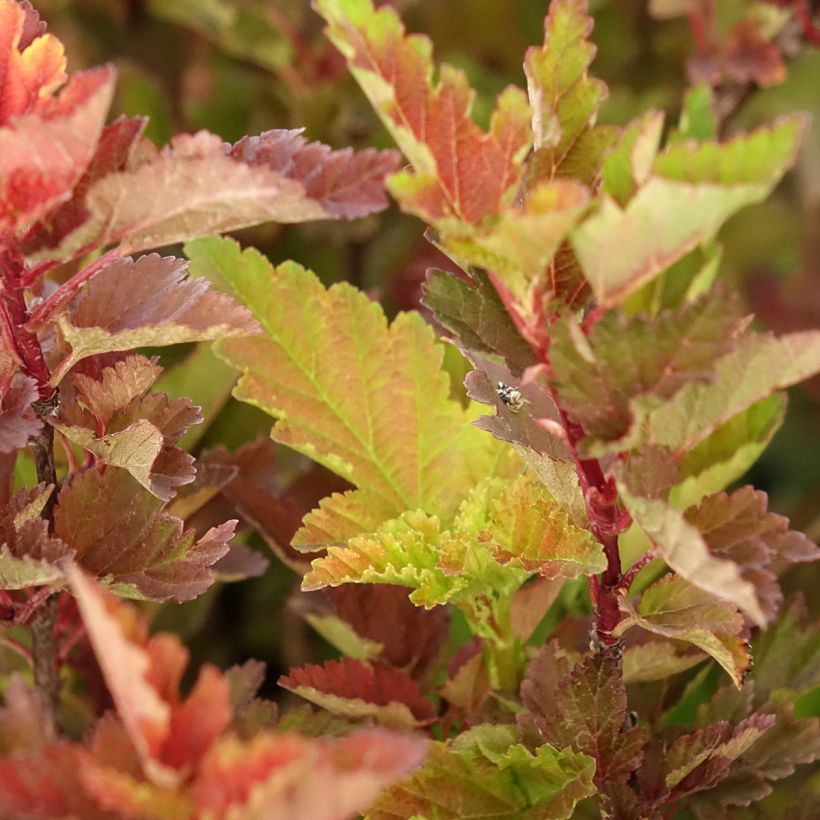

Plant habit
Flowering
Foliage
Botanical data
Physocarpus
opulifolius
'LP2' LITTLE LEENA
Rosaceae
Ninebark, Eastern ninebark
Cultivar or hybrid
Planting and care
Plant Physocarpus opulifolius 'Little Leena' in deep, humus-bearing, rich and moist soil, preferably neutral to slightly acidic. It fears excess limestone, as well as overly dry conditions. Dig a hole 50 cm on each side and at the bottom, and mix slightly acidic planting compost with the existing soil. Soak the root ball in a bucket of water for fifteen minutes, then place it in the planting hole. Fill in around it and water thoroughly, you can also add mulch to the ground to maintain some moisture at the roots. Water regularly for the first two years and during dry periods. This bush will thrive in partial shade or full sun, but the foliage will be more colourful in the sun. It is a bush that thrives in cold to temperate climates and is easily grown in many regions.
Planting period
Intended location
Care
This item has not been reviewed yet - be the first to leave a review about it.
Similar products
Haven't found what you were looking for?
Hardiness is the lowest winter temperature a plant can endure without suffering serious damage or even dying. However, hardiness is affected by location (a sheltered area, such as a patio), protection (winter cover) and soil type (hardiness is improved by well-drained soil).

Photo Sharing Terms & Conditions
In order to encourage gardeners to interact and share their experiences, Promesse de fleurs offers various media enabling content to be uploaded onto its Site - in particular via the ‘Photo sharing’ module.
The User agrees to refrain from:
- Posting any content that is illegal, prejudicial, insulting, racist, inciteful to hatred, revisionist, contrary to public decency, that infringes on privacy or on the privacy rights of third parties, in particular the publicity rights of persons and goods, intellectual property rights, or the right to privacy.
- Submitting content on behalf of a third party;
- Impersonate the identity of a third party and/or publish any personal information about a third party;
In general, the User undertakes to refrain from any unethical behaviour.
All Content (in particular text, comments, files, images, photos, videos, creative works, etc.), which may be subject to property or intellectual property rights, image or other private rights, shall remain the property of the User, subject to the limited rights granted by the terms of the licence granted by Promesse de fleurs as stated below. Users are at liberty to publish or not to publish such Content on the Site, notably via the ‘Photo Sharing’ facility, and accept that this Content shall be made public and freely accessible, notably on the Internet.
Users further acknowledge, undertake to have ,and guarantee that they hold all necessary rights and permissions to publish such material on the Site, in particular with regard to the legislation in force pertaining to any privacy, property, intellectual property, image, or contractual rights, or rights of any other nature. By publishing such Content on the Site, Users acknowledge accepting full liability as publishers of the Content within the meaning of the law, and grant Promesse de fleurs, free of charge, an inclusive, worldwide licence for the said Content for the entire duration of its publication, including all reproduction, representation, up/downloading, displaying, performing, transmission, and storage rights.
Users also grant permission for their name to be linked to the Content and accept that this link may not always be made available.
By engaging in posting material, Users consent to their Content becoming automatically accessible on the Internet, in particular on other sites and/or blogs and/or web pages of the Promesse de fleurs site, including in particular social pages and the Promesse de fleurs catalogue.
Users may secure the removal of entrusted content free of charge by issuing a simple request via our contact form.
The flowering period indicated on our website applies to countries and regions located in USDA zone 8 (France, the United Kingdom, Ireland, the Netherlands, etc.)
It will vary according to where you live:
- In zones 9 to 10 (Italy, Spain, Greece, etc.), flowering will occur about 2 to 4 weeks earlier.
- In zones 6 to 7 (Germany, Poland, Slovenia, and lower mountainous regions), flowering will be delayed by 2 to 3 weeks.
- In zone 5 (Central Europe, Scandinavia), blooming will be delayed by 3 to 5 weeks.
In temperate climates, pruning of spring-flowering shrubs (forsythia, spireas, etc.) should be done just after flowering.
Pruning of summer-flowering shrubs (Indian Lilac, Perovskia, etc.) can be done in winter or spring.
In cold regions as well as with frost-sensitive plants, avoid pruning too early when severe frosts may still occur.
The planting period indicated on our website applies to countries and regions located in USDA zone 8 (France, United Kingdom, Ireland, Netherlands).
It will vary according to where you live:
- In Mediterranean zones (Marseille, Madrid, Milan, etc.), autumn and winter are the best planting periods.
- In continental zones (Strasbourg, Munich, Vienna, etc.), delay planting by 2 to 3 weeks in spring and bring it forward by 2 to 4 weeks in autumn.
- In mountainous regions (the Alps, Pyrenees, Carpathians, etc.), it is best to plant in late spring (May-June) or late summer (August-September).
The harvesting period indicated on our website applies to countries and regions in USDA zone 8 (France, England, Ireland, the Netherlands).
In colder areas (Scandinavia, Poland, Austria...) fruit and vegetable harvests are likely to be delayed by 3-4 weeks.
In warmer areas (Italy, Spain, Greece, etc.), harvesting will probably take place earlier, depending on weather conditions.
The sowing periods indicated on our website apply to countries and regions within USDA Zone 8 (France, UK, Ireland, Netherlands).
In colder areas (Scandinavia, Poland, Austria...), delay any outdoor sowing by 3-4 weeks, or sow under glass.
In warmer climes (Italy, Spain, Greece, etc.), bring outdoor sowing forward by a few weeks.

































